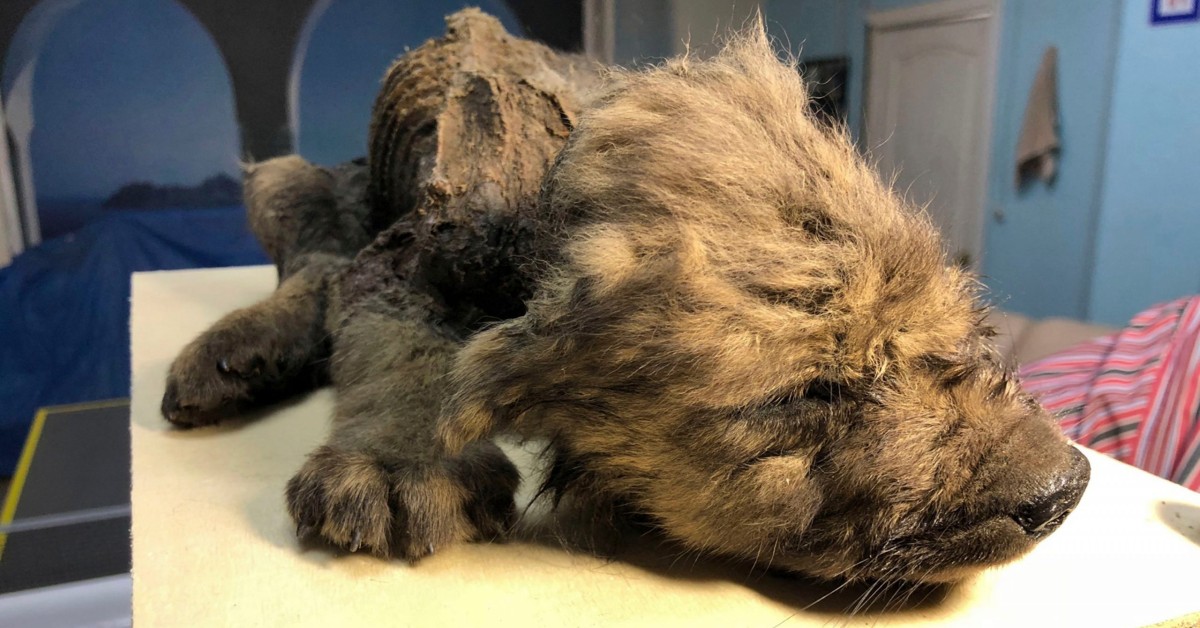Was this 18,000-year-old puppy frozen in Siberian permafrost the ancestor of wolves, dogs or both?

Meet Dogor, an 18,000-year-old pup recently unearthed in Siberian permafrost whose name means ‘friend’ in the Yakut language. The remains of the prehistoric pup are baffling researchers because genetic testing shows it’s not a wolf or a dog, meaning it could be an elusive ancestor of both.
Locals found the creature’s remains in the summer of 2018 in a frozen lump of ground near the Indigirka River, according to the North-Eastern Federal University in Yakutsk. The puppy’s full body, thick hair, muzzle, and even whiskers and eyelashes had been preserved by permafrost, so much so that researchers at the Centre for Palaeogenetics in Sweden were able to sequence the animal’s DNA using a piece of rib bone. According to the results, Dogor was male, but even after two rounds of analysis the team could not determine whether he was a dog or a wolf.

‘It’s normally relatively easy to tell the difference between the two,’ David Stanton, a Centre for Palaeogenetics research fellow, told Amy Woodyatt at CNN. ‘We have a lot of data from it already, and with that amount of data, you’d expect to tell if it was one or the other. The fact that we can’t might suggest that it’s from a population that was ancestral to both to dogs and wolves.’
So the reason why scientists cannot determine the exact species could be that the find comes from the point where dogs were domesticated. According to Stanton, Dogor comes from an interesting time in canine evolution, when wolf species were dying out and early dogs were beginning to emerge.
‘As you go back in time, as you get closer to the point that dogs and wolves converge, [it becomes] harder to tell between the two,’ Stanton noted.


The history of just how and when dogs split from wolves is unclear. There’s a general agreement among scientists that modern gray wolves and dogs split from a common ancestor 15,000 to 40,000 years ago, explains Brian Handwerk previously for Smithsonian.com. How dogs became dogs, however, is contested. Some research suggests that dogs were domesticated by humans once, while other studies have found dogs were domesticated multiple times. Exactly where in the world wild canines became man’s best friend is also disputed. The origin of the human-animal bond has been traced to Mongolia, China and Europe.
Scientists disagree about how dogs ended up paired with people, too. Some suspect humans captured wolf pups and actively domesticated them. Others suggest that a strain of “friendly,” less aggressive wolves more or less domesticated themselves by hanging out near humans, gaining access to their leftover food.
Dorgor’s DNA could help unravel these mysteries. The team plans to do a third round of DNA testing that may help definitively place Dogor in the canine family tree. At the same time, since climate change is affecting the Siberian permafrost, people will be finding more and more ancient creatures unthawing.


Sources: North-Eastern Federal University in Yakutsk, Smithsonian, Boredpanda
